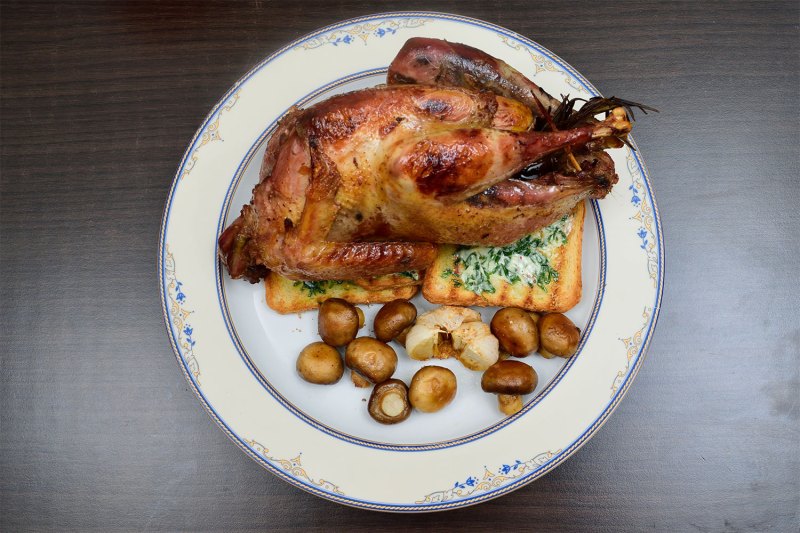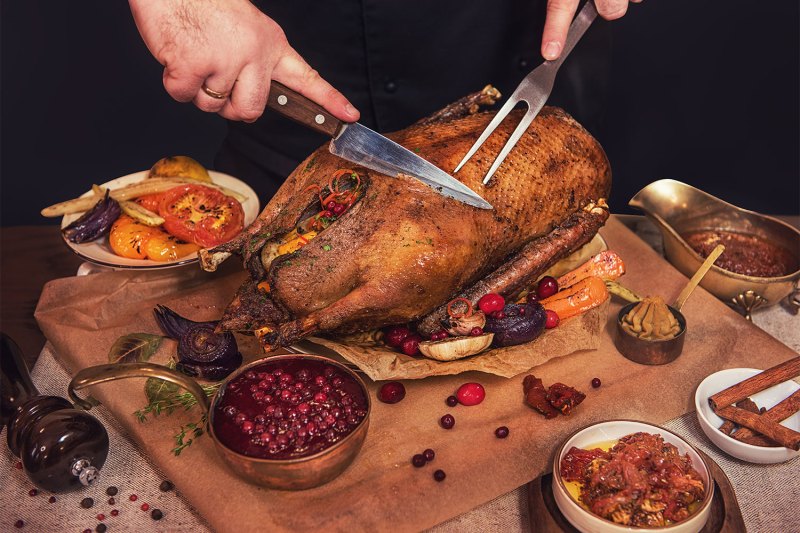When it comes to the birds we eat and enjoy, we tend to start with chicken and turkey. But there’s a whole kingdom of tasty flying critters out there, many of which we have limited experience with in the kitchen.
Game birds do not have to be explicitly reserved for restaurant outings. They’re available at supermarkets and specialty stores all over the country, after all. You should be preparing things like pheasant and quail at home, perfecting recipes and fine-tuning techniques. You’ll learn to appreciate the wide spectrum of flavors within the category and maybe even find a new favorite dish.
Geoff Latham is the owner of Nicky Farms in Portland. The specialty protein purveyors sell everything from rabbit to Hawaiian venison and have been doing so since 1990. A big part of the company’s program is its game selection, which spans the gamut of wild birds. Latham and his team are eager to get some in your hands as well as share some wisdom on how best to prepare the stuff.
He says the biggest mistake people make when preparing game birds is overcooking and not letting them rest for the proper amount of time. Latham adds that bringing the birds to room temperature before cooking is quite important, along with seasoning them. “You can even season the bigger birds — duck, goose, wild turkey, pheasant, and guinea hens two-and-a-half pounds and up — the day prior,” he says. “After seasoning, leave uncovered in the fridge overnight to allow the skin to dry out a bit so when they’re cooked, the skin turns out crispy and golden.”
When it comes to firing up the grill, Latham suggests not taking the more traditional beef steak approach. “They’re lean birds, so not as high and not as quick,” he says. “The key is to grill low and slow.”
Pheasant

This tasty bird is especially lean and low in fat. “You want to use things like wine, juniper, and mustard that are complementary to the bird and pheasant in particular,” Latham says. “A great way to cook them is to take the breast off the bone and sauté with wine and wild mushrooms. The moisture from the mushrooms helps keep the breast nice and moist. Another tip is to add a compound butter and spices and you shove it under the skin and rub it on top of the bird,” he adds.
Goose

Roasting a goose takes advantage of the nice fatty layer between the animal’s skin and muscle. Goose can be served a bit pink, unlike turkey, and keep in mind that the burly legs will likely take the longest to fully cook. A great way to capitalize on the flavors is to stuff the goose with citrus, bay leaves, and onions, while seasoning the exterior with salt and a bit of lemon pepper. It’s common to serve alongside some kind of apple dish (sauce, roasted, etc.) as the two flavor profiles work tremendously with one another.
Duck

It’s tough to beat grilled duck. Try doing so with some salt, pepper, and paprika and make sure you’ve got a good drip pan in place. With gas, you can grill on medium low. With charcoal, it’s advised to arrange the briquettes around the pan once they’re medium-hot, adding new ones when necessary. The whole process will likely take about an hour to an hour-and-a-half and you’ll be left with some lovely meat and caramelized skin. If you’re in more of a rush, try butterflying the bird before grilling.
Wild Turkey

Whole turkey isn’t just for the holidays. In fact, the better deals are away from Thanksgiving and Christmas. The meaty bird can outfit you with lean and relatively lunch meat for weeks. Cook it like you would a regular, supermarket-bought turkey but keep in mind that the bird is likely smaller and will cook faster. Hold on to these intense, raw flavors with patient cooking at a lower temperature.
Quail

Latham describes the Coturnix quail as a gateway bird for those thinking about getting into the game bird category. It’s full of dark meat that usually retains its juiciness no matter how you cook it. “Quail is my favorite and easiest to cook, its versatility is great for a salad or entre,” Latham says. “You can stuff one with rice, mushrooms, sausage, or a combination and roast it or pan sear for a delicious simple meal. Adding pancetta is another good option.”


